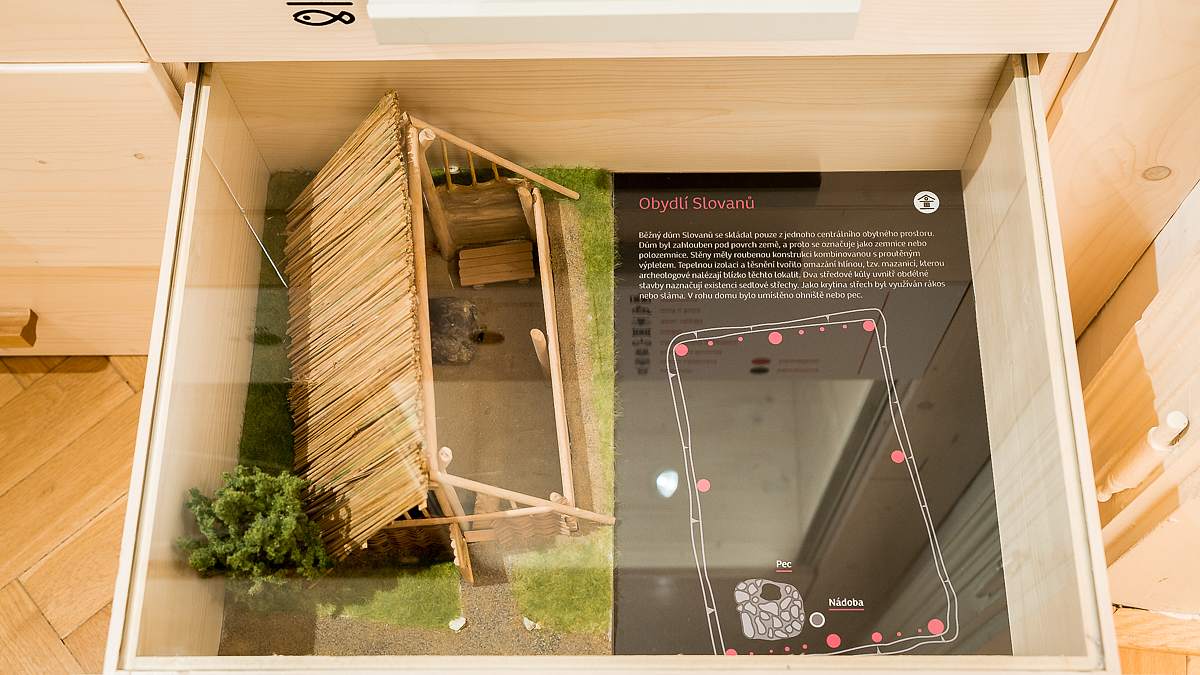SLAVS IN THE BLATNÁ REGION
In the 8th and 9th centuries, the territory of the present-day region of Blatná saw the arrival of Slavs. Although these people were technologically less advanced than the outgoing Celts, they were very adaptable. They lived in small, recessed houses, which they heated by using an open fireplace or a simple stone oven. Smoke escaped from the dwelling through the opening at the ridge of the saddleback roof.
They earned their living mainly by cattle breeding and agriculture. Just like their predecessors, they harvested grain with a sickle. Grain and food were stored in large thick-walled ceramic containers – in storage tanks and storage pits dug into the ground. Both bread and ceramics were fired in simple chamber furnaces. Ceramic items had simple pot shapes and differed only in size. They were decorated with engraved lines and wavy lines. No settlements have been found, because they were either situated on the sites of today’s municipalities, or they were surface houses which are difficult to capture archaeologically.
The burial rite of Slavs was similar to the previous era, only being slightly poorer. They would mostly build a smallish earthen mound, in which they placed several containers and a part of the cremated deceased. Sometimes they would use an already built older mound, in which they secondarily placed a container with the ashes of the dead. Such mounds have been uncovered on locations near Bezdědovice, Dobšice, Chlum, Kocelovice, Sedlic and Zavišín. Gradually, during the 9th and 10th centuries, flat burial sites became to appear, containing whole skeletons with charitable gifts, e.g., near Bělčice.


